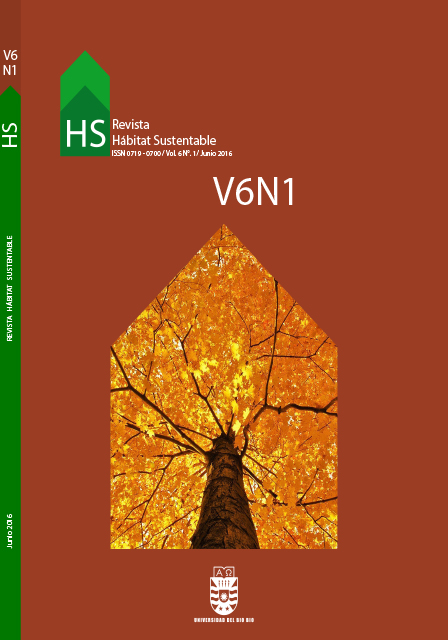Indoor Air Quality (IAQ) in a research station in Antarctica: Identification of pollution sources and control strategies
Keywords:
Indoor Air Quality, indoor sources, Antarctic buildingsAbstract
The research stations in Antarctica present real building operation situations, which makes them potential objects for the investigation of Indoor Air Quality (IAQ). In this context, this paper identifies the main air pollution sources based on data previously collected at the Brazilian Comandante Ferraz Antarctic Station (EACF) and determines IAQ control strategies for Brazilian Antarctic buildings. These strategies were incorporated into the EACF reconstruction project after a fire in February 2012 destroyed the main section of the station. Among the most important points proposed by the new project in relation to indoor air quality were the implementation of blocks, an efficient air exchange system, and the specification of materials with low Volatile Organic Compound (VOC) emissions. The construction of the building in blocks based on function avoided the crossing of air pollution from service areas to habitable environments. However, due to the confined characteristics of an Antarctic research station, the specification of materials containing adhesives and resins, even those that are certified, is still a concern for human health.
Downloads
References
ALVAREZ, Cristina Engel de; CASAGRANDE, Braz; SOARES, Glyvani Rubim. Resultados alcançados com a implementação do plano diretor da Estação Antártica Comandante Ferraz (EACF). In: IV Encontro Nacional e II Encontro Latino Americano sobre Edi cações e Comunidades Sustentáveis, Campo Grande: ANTAC, 2007.
ALVAREZ, Cristina Engel de; VARGAS, Paulo Sérgio de Paula.; VIDIGAL, Emerson José. As novas edi cações brasileiras na Antártica: do concurso de projeto ao estágio atual. In: XXIV Reunión de Administradores de Programas Antárticos Latinoamericanos, Chile: 2013.
ANTUNES, Bianca. Jovens arquitetos do Estúdio41 vencem o concurso para a Estação Antártica brasileira com um projeto que une conforto térmico com baixo consumo energético e produção de energia com sistemas limpos. AU 213. Acesso em julho de 2014. Disponível em:< http://au.pini.com.br/>.
ANVISA AGÊNCIA NACIONAL DE VIGILÂNCIA SANITÁRIA. Resolução - RE n° 9, de 16 de janeiro de 2003. Brasil: Diário O cial da União, 2003.
BRICKUS, Leila de Souza da Rocha e AQUINO NETO, Francisco Radler de. A qualidade do ar de interiores e a química. Química nova, 1999, n° 22, pp. 65-74.
CROOK, Brian e BURTON Nancy C. Indoor moulds, sick building syndrome and building related illness. Fungal Biology Reviews, 2010, n°24, pp.106-113.
DERBEZ, Mickaël; BERTHINEAU, Bruno; COCHET, Valérie; LETHROSNE, Murielle; PIGNON, Cécile; RIBERON, Jacques; KIRCHNER, Severine. Indoor air quality and comfort in seven newly builty, energy-ef cient houses in France. Building and Environment, 2014, n°72, pp.173-187.
ESTUDIO41. Estação Antártica Comandante Ferraz. 2013. Acesso em julho 2014. Disponível em:< http://www.estudio41.com.br>.
INSTITUTO DOS ARQUITETOS DO BRASIL. Termo de Referência: ANEXO 1 do concurso da EACF. Brasil: 2013.
KEELER, Marian e BURKE, Bill. Fundamentos de projeto de edi cações sustentáveis. Porto Alegre: Ed. Bookman, 2010.
MISHRA, Vinit Kumar; KIM, Ki-Hyun; HONG, Sungmin; LEE Khanghyun. 2004. Aerosol composition and its sources at the King Sejong Station, Antarctic peninsula. Atmospheric Environment 38: 4069-4084.
MISSIA, Dafni; DEMETRIOU, Eleni; MICHAEL, N.; TOLIS, Evangelos; BARTZIS, John G. Indoor exposure from building materials: a eld study. Atmospheric Environment, 2010, no 44, pp. 4388-4395.
PAGEL, Érica Coelho; BEGHI, Sandra Paule; ALVAREZ, Cristina Engel de; REIS JÚNIOR, Neyval Costa; ANTUNES, Paulo Wagnner Pereira; CASSINI, Sérvio Túlio; SANTOS, Jane Méri. Analysis of Indoor Aldehydes in the Comandante Ferraz Antarctic Station. INCT-APA Annual Activity Report, 2012, p. 178-183. DOI: 10.4322/apa.2014.085
PAGEL, Érica Coelho; REIS JÚNIOR, Neyval Costa; ALVAREZ, Cristina Engel de; SANTOS, Jane Méri; CONTI, Melina Moreira; BOLDRINI, Ricardo Salvador; KERR, Américo Sansigolo. Characterization of the indoor particles and their sources in an Antarctic research station. Environmental Monitoring and Assessment, 2016a, n°188:167, p. 1-16. DOI: 10.1007/s10661- 016-5172-z
SCE - SISTEMA NACIONAL DE CERTIFICAÇÃO ENERGÉTICA DA QUALIDADE DO AR INTERIOR NOS EDIFÍCIOS. Nota Técnica NT-SCE-02 Metodologia para auditorias periódicas de Qualidade do Ar Interior em edifícios de serviços existentes no âmbito do RSECE. Portugal. 2009
THE EUROPEAN STANDARD. EN ISO 16000-1: indoor air – general aspects of sampling strategy. Bruxelas. 2006. WESCHLER, Charles Joseph. Changes in indoor pollutants since the 1950s. Atmospheric Environment, 2009, n° 43, p.153-169.
WHO REGIONAL OFFICE FOR EUROPE. WHO guidelines for indoor air quality. Nutrition journal, v. 9, p. 454, 2010.
Downloads
Published
How to Cite
Issue
Section
License
The content of articles which are published in each edition of Habitat Sustentable, is the exclusive responsibility of the author(s) and does not necessarily represent the thinking or compromise the opinion of University of the Bio-Bio.
The author(s) conserve their copyright and guarantee to the journal, the right of first publication of their work. This will simultaneously be subject to the Creative Commons Recognition License CC BY-SA, which allows others to share-copy, transform or create new materials from this work for non-commercial purposes, as long as they recognize authorship and the first publication in this journal, and its new creations are under a license with the same terms.











 Scientific Information Program/Concurso Fondos de Publicación de Revistas Científicas 2018/ Proyecto Mejoramiento de Visibilidad de Revistas UBB (Código:FP180007).
Scientific Information Program/Concurso Fondos de Publicación de Revistas Científicas 2018/ Proyecto Mejoramiento de Visibilidad de Revistas UBB (Código:FP180007).





